What a privilege it is to poke on the front line of ocular health! Your tonometer, that trusty tool in your arsenal, is essential in safeguarding the visual health of your patients. But, as with any finely-tuned instrument, it requires regular, specific maintenance to ensure accuracy and reliability. We’re going to delve into everything you need to know about optimizing your tonometer maintenance in this comprehensive guide.
Remember, a well-maintained tonometer isn’t just about equipment longevity—it’s about rendering consistent, accurate measurements that are essential for early detection and management of ocular issues like glaucoma.
Whether you’ve been navigating the realms of optometry for years, or you’re fresh in orientation, this guide will serve as a pertinent resource. We’ll dissect all the vital aspects of tonometer maintenance, leading to optimal performance and ultimate peace of mind. Sit tight and keep reading; you’re about to make the most out of your tonometer!
Keeping your tonometer finely tuned isn’t rocket science, but it does require a methodical approach. Think of your tonometer as a symphony player; to perform well at each concert, regular practice and tuning are mandatory. The fully serviceable nature of these devices makes regular maintenance a breeze.
Now, let’s delve into the frequency of maintenance. For new tonometers, it’s recommended to perform checks twice a year in the first year. Imagine this as a ‘break-in period’; identifying any initial issues early on promotes long-term accuracy. After the first year, monthly checks are highly advised. The more your tonometer dares to age, the more vigilant you must be!
Moving onto the importance of calibration, especially for non-contact tonometers. Calibration is your tonometer’s best friend, ensuring it offers accurate pressure readings consistently. For Goldmann applanation tonometers, calibration checks should be performed every six months in its debut year migrating to monthly intervals thereafter.
| Tonometer Type | First Year | After First Year |
|---|---|---|
| Applanation Tonometer | Every six months | Monthly |
| Non-contact Tonometer | Recommended every two months | Monthly |
Please note that timeframes are general recommendations. Your specific schedule may vary based on the manufacturer’s guidelines and your practice’s needs.
With that in mind, let’s delve into the best practices for maintaining the hygiene of your tonometer. An aspect of this is understanding when and how to disinfect your device. Many optometrists disinfect their tonometers right after use. Others prefer to do so before, or both before and after every use. In some practices, disinfection takes place once or even twice daily.
The approach to disinfection could be influenced by factors such as the specific type and concentration of the disinfectants you are using, and the tonometer tip type – whether it’s disposable or reusable. In addition, usage of timers during disinfection is a common practice that helps ensure the efficiency and effectiveness of the process.
Calibration is another key element involved in maintaining an optimally functioning tonometer. This procedure confirms that your device is reading pressures accurately. Remember, the accuracy of your tonometer could mean the difference between detecting a patient’s glaucoma early or missing it until it’s too late. For example, for a Goldmann applanation tonometer, it’s typically recommended to calibrate once every six months in its first year, and once every month thereafter. But there are cases where it may need to be checked even every 2 months or sooner, depending on usage levels and other factors.
Now that we’ve elucidated on the disinfection and calibration process, let’s move onto a critical aspect of tonometer maintenance – having the right ophthalmic supplies in stock. These can range from the correct disinfectants to additional supplies necessary for calibration. Remember, being well-equipped is a vital part of maintaining not just the functionality of your tonometer, but its longevity too.
By applying these recommended techniques, you not only optimize the performance of your tonometer, but also enhance its reliability in the long term. Essentially, maintaining your tonometer is less about frequent repairs and more about preventive measures that forestall issues before they begin. So consider adopting a full-service approach to maintenance. This will address underlying issues that could influence the accuracy of your measurements while improving the overall efficiency of your practice.
| Maintenance Task | Frequency | Benefits |
|---|---|---|
| Calibration Check | Daily | Early discovery of calibration errors, facilitating timely troubleshooting |
| General Inspection | Monthly for devices over 1 year | Ensures the instrument’s functionality and performance |
| Disinfection | After each use | Keeps the device safe and free from harmful bacteria, ensuring patient safety |
| Full Service | Bi-annually | Addresses all underlying issues for long-term accuracy and reliability |
It’s your responsibility as an eye care professional to ensure the proper care of your tonometer. This includes not just the daily tasks but also attention to long-term maintenance. Let’s explore a few additional components that require your attention!
Calibration is a day-to-day necessity for handheld tonometers. Get into the habit of checking the calibration before office hours. The frequency of such checks varies with the brand and model of your tonometer and its usage levels. Being diligent on this front helps preserve the accuracy and reliability of readings.
You might perceive a service contract as an extra expenditure. However, it provides invaluable peace of mind by covering critical maintenance tasks, such as function tests to verify calibration. Consider it as an investment that contributes to the long-term functionality and reliability of your tonometer.
Why is a comprehensive full-service approach to tonometer maintenance essential? It’s simply because it looks at the bigger picture. It uncovers and addresses issues lurking beneath the surface that might affect your tonometer’s performance over time. If you invest in full-service maintenance, you’re investing in the sustained accuracy of your tonometer—in short, you’re investing in patient safety.
Regular disinfection is also an imperative part of tonometer hygiene. Remember to disinfect the device after each use. This ai…one but a critical one to ensure your patient’s safety and simultaneously uphold the efficiency of your equipment.
How, when, and with what you disinfect your tonometer with carries weight. Disinfecting tonometers requires a delicate hand to avoid causing any damage to the prism.
For best practices, it’s highly recommended to follow the 2008 CDC guidelines for tonometer disinfection. As the dynamics of eye care shift, staying updated and adapting to such prescribed healthcare measures is increasingly important. A well-maintained tonometer not only contributes to accuracy but also extends the device’s longevity. In this regard, understanding the correct disinfection techniques matters a great deal. For instance, soaking in a solution of 10% hypochlorite, otherwise known as dilute bleach, is widely acknowledged as the most effective disinfection routine for your tonometer.
Is your disinfection method up-to-date? Surveys such as the one conducted by Craven et al. in 1987 showed that cleaning Goldmann tonometer tips with 70% isopropyl alcohol wipes was a common approach. However, it’s crucial to keep an eye on the latest research and tweak your disinfection routines as necessary. Interestingly, the same survey revealed a not-so-standardized approach at the time, highlighting 16 different methods of tonometer disinfection. While practices can vary, if you’re looking for the most efficient method, it’s advisable to stick to the recommended guidelines and customer feedback.
Finally, regardless of your preferred disinfection technique, be it with detergents or isopropyl alcohol, cleanliness should never be compromised. Strict adherence to regular cleaning and disinfection routines is the cornerstone of proper tonometer maintenance and, indeed, ensures the maintenance of high standards of patient care.
Commonly recommended disinfectants include 10% Hypochlorite (dilute bleach), 70% Isopropyl Alcohol, Detergent, and 3% Hydrogen peroxide. Following disinfection, rinsing with water and letting the tonometer tip dry is fundamental.
Yes, most practitioners clean reusable tonometer tips immediately following each use. This aids in preventing cross-contamination and ensures the safety of each subsequent patient.
Staying up-to-date with CDC guidelines and other medical resources is crucial. They regularly conduct research and provide updated recommendations for disinfection practices to ensure patient safety.
Although different disinfection methods exist, maintaining a standard and regular disinfection routine is necessary. This aids in keeping the tonometer in an optimal condition while also enhancing patient safety.
When disinfecting tonometers, special care should be given to avoid damaging the prism. Regardless of the disinfectant used, incorrect handling could compromise tonometer functionality.
Proper maintenance of your tonometer, including appropriate disinfection and calibration, is fundamental for accurate measurements and patient safety. It’s crucial to remember that the choice of disinfectant impacts the prism in your tonometer and the risk of patient injury.
In conclusion, handling your tonometer with care, disinfecting with recommended solutions, and ensuring regular calibration checks are paramount for the device’s longevity and efficiency. By adhering to these practices, you ensure the optimal functioning of your tonometer and the safety of your patients. This fundamental understanding can significantly enhance your daily medical practice as well as the overall impression your patients have of your service’s quality, safety, and professionalism. Remember, when in doubt, consult the manufacturer’s guidelines or seek expert advice.
Discover more insightful information and practical tips on tonometer maintenance and usage at ikistc.com. Stay tuned to our platform for more comprehensive guides and resources for all your ophthalmic needs.
VISIT OUR SHOP
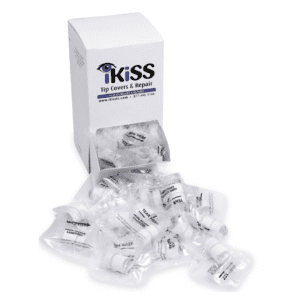
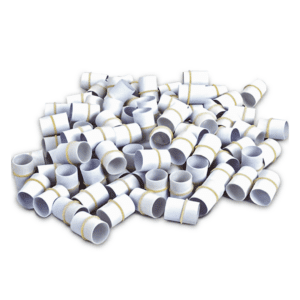
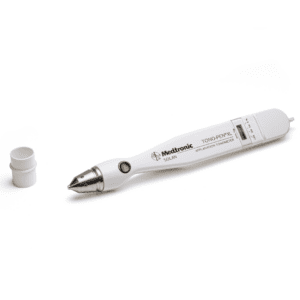
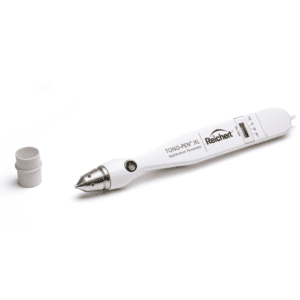
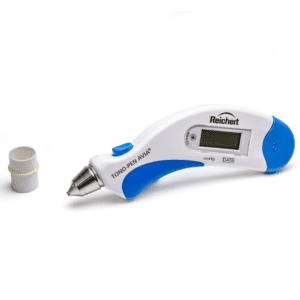
iKiSS is the go-to provider for top-quality refurbished Tono-Pen® Tonometers, Tono-Pen AVIA® Tonometers, Slit Lamps, and Phoropters, offering substantial savings of up to 40%.